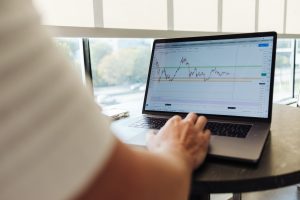Commodity trading is a form of investment in which investors buy and sell various products. It includes physical and derivative contracts, gold, agricultural products, and crude oil.
Not everyone knows it, but it plays a crucial role in India’s commodities as one of the significant income and export revenue. We will discuss in-depth Commodity Trading for beginners in India, the trading process and related aspects, its benefits and risks, and more.
Commodity Markets in India
There are mainly two types of commodity markets, viz. Derivatives and Spot. The first one includes trading of futures contracts, whereas Spot is associated with physical purchasing and selling various commodities.
Spot markets, often known as physical markets, are where commodities are traded for immediate delivery. There are various spot markets in India, such as the Agricultural Produce Market Committee (APMC) market, which mainly deals with the trade of agricultural commodities such as fruits, vegetables, and grains. Specialized markets for metals, bullion, and energy items exist.
Derivatives markets include trading contracts depending on the price of the underlying commodity. Futures and options are the most popular derivatives trading in India. Futures contracts are agreements to purchase or sell a particular commodity at a defined price and date in the future.
The Securities and Exchange Board of India (SEBI) regulates Commodity exchanges in India. Along with that, there are Multi-Commodity Exchange (MCX), Indian Commodity Exchange (ICEX), and The National Commodity and Derivatives Exchange (NCDEX) which are the leading national-level commodity exchanges in India.

Commodity Trading: Explained
To initiate trading commodities, it is essential that you first recognize the various types of commodity markets in India. It includes energy commodities, metals, and agricultural products.
Gold is India’s most widely traded commodity, backed by silver, crude oil, and natural gas. The commodity trading process consists of three main phases: placing an order, settlement, and finally, delivery.
Various factors affecting them are supply and demand, government policies, geopolitical tensions, and weather conditions. As a result, traders must be aware of global news and trends that may impact commodity prices.
Commodity Types Traded in India
Commodities are exchanged at commodity markets in India. Commodities exchanged are classified into three types:
Grain, pulses, cotton, oil seeds, sugar, spices, fruits, and vegetables are examples of agricultural commodities. These commodities trade on both spot and futures markets.
Examples of energy commodities include crude oil, natural gas, and petroleum products such as petrol, diesel, and jet fuel. Futures markets are a way to trade these commodities.
Precious metals, such as gold, silver, palladium, platinum, and commercial metals, such as copper, aluminum, and zinc, are examples of metal commodities. Futures markets serve as a means to trade these commodities.
Beginners also need to know about vital factors which are associated with Commodity Prices:
Factors Influencing Commodity Prices
Demand and Supply:
A commodity’s price is mainly influenced by its supply and demand. The simple rule is: Price rises when the supply of a commodity is insufficient to meet the demand and vice versa.
Weather Conditions:
The weather impacts the cost of agricultural goods. For example, drought or flooding may have an extreme effect on agricultural production, which as a result, reduces supply, and that means – raised prices.
Government Policies:
Production, consumption, and exchange of commodities can also be influenced by government policies, including subsidies, tariffs, and taxes, which can shift significant prices.
How to Start Commodity Trading in India: Step-by-Step Guide
As we all know, Commodity trading has become one of the significant trading choices in India. With so many novice traders joining each day, looking to grow their profits through various commodities, only some know how to get started on Commodity trading.
For those interested traders, here we are providing a step-by-step guide on how to start commodity trading in India:
1. Registration with a Commodity Broker
The very first step is registration with a commodity broker. They are licensed professionals who act as intermediaries between the commodity exchange and the trader. You can find many such reputed commodity brokers in India; you can easily choose one that meets your trading needs.
2. Opening a Commodity Trading Account
Once you have finalized the broker, you must open a commodity trading account. The broker will guide you throughout the entire process. You must submit your personal and financial details, identity proof, and bank account details. After opening your account, you will receive your login credentials to access your trading account.
3. Understanding Margin and Leverage
Margin is the amount of capital required to open a position in commodity trading. Commodity brokers usually require a margin amount ranging from 3% to 10% of the commodity’s total value. Leverage means controlling a prominent position with a small amount of capital. Commodity trading in India offers high leverage, but traders need to understand the associated risks before using leverage.
4. Placing Orders
Once your account is ready, you can place orders to buy or sell commodities. Commodity trading has three types of orders: market, limit, and stop-loss.
A market order goes immediately with the current market price.
A limit order is executed only when the commodity price reaches a specified price.
A stop-loss order minimizes losses by selling the commodity when its price falls to a specific level.
Benefits and Risks of Commodity Trading
Commodities trading has grown in popularity in India because of its multiple benefits, such as broadening investment portfolios, inflation protection, and, most importantly, a high probability of getting considerable profits.
Yet, there are some drawbacks associated with commodities trading as well. Let’s take a look at both of those:
Benefits of Commodities Trading
Diversification:
Commodities trading is an excellent way to diversify investment portfolios. Traders can diversify their risks and reduce the effect of losses in one commodity on their whole portfolio by investing in multiple commodities.
Inflation Protection:
Commodity prices typically rise during inflation, making commodities an effective inflation hedge. For example, the cost of gold, a precious metal commodity, typically jumps during inflationary periods, protecting investors from weakening their currency’s value.
Commodity trading may provide big profits, especially in intense demand and a low supply. Traders can profit from price fluctuations in the commodities markets.
Risks of Commodity Trading:
Volatility
Commodity prices can be volatile due to many factors, such as geopolitical tensions, weather systems, and global economic circumstances. Traders might suffer significant losses as a result of the severe volatility.
Market Risks:
Sudden changes in market conditions, such as currency rate fluctuations or unforeseen shifts in global commodity demand and supply, can impact commodity markets. These market risks might result in trader losses.
Operational Risks:
Commodities trading involves business risks such as technical malfunctions, system failures, and mistakes in trade execution. These risks might cause financial losses for traders and have a consequence on their trading success.
Commodities Trading Risk Management:
Do Thorough Research:
Whenever investing in a commodity, traders should perform a thorough study to gain insight into market conditions, commodity trends, and the dangers of trading the commodity.
Utilize Stop-Loss Orders:
Traders can use stop-loss orders to minimize their potential losses. A stop-loss order is an order that sells a commodity automatically if its price drops below a certain threshold.
Diversify Investments:
Investment diversification is critical to minimizing the effect of loss for one commodity on the total portfolio. Traders can spread their risks by investing in a variety of commodities.
Tips for Successful Commodity Trading
Commodity traders must start by conducting thorough research and analysis on the commodities they are interested in trading. By analyzing past pricing, supply, demand dynamics, and international news and trends – it is necessary to be aware of all these aspects.
Also, traders must create a trading plan according to their risk appetite, financial objectives, and methods for entering and exiting transactions. While trading, it is critical to keep emotions under control and not act rashly out of greed.
If you are skeptical about where to start or want reliable guidance on this subject. Check out this stock market learning course that explains all the concepts in absolute detail with expert guidance, online study material, and live training sessions for perfect understanding.
Conclusion
Commodity trading can be a lucrative investment option for those willing to take risks and properly understand various market dynamics. By conducting thorough research, keeping up with news and trends, and developing trading plans, novice investors can maximize their chances of success in the commodity market.
Related Posts
Options Trading for Beginners in India
Successful Entrepreneurs who started out in the Indian stock market










